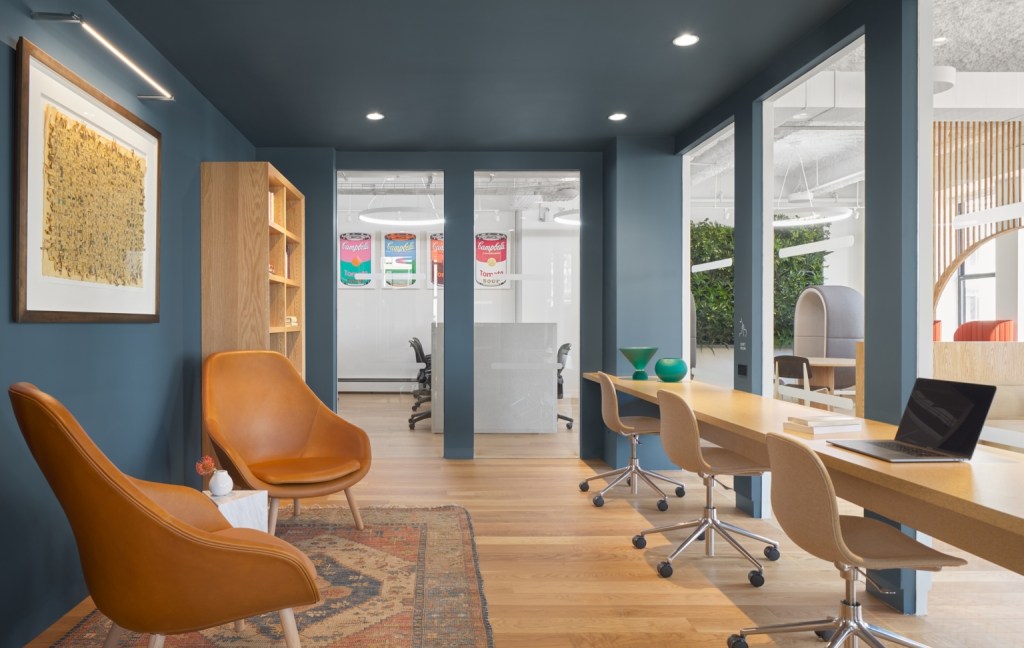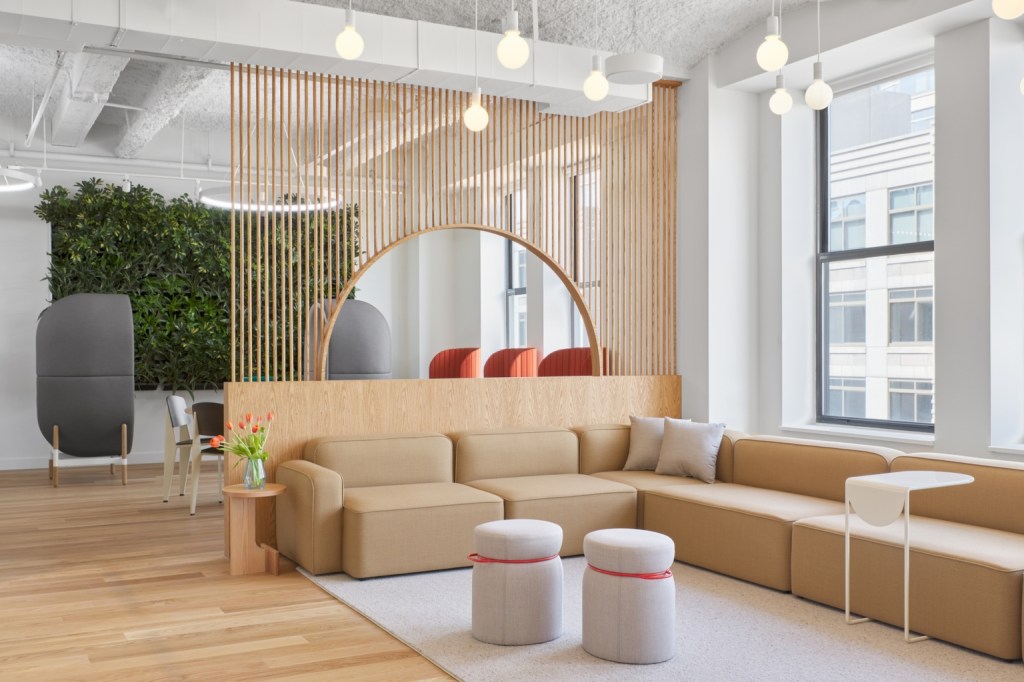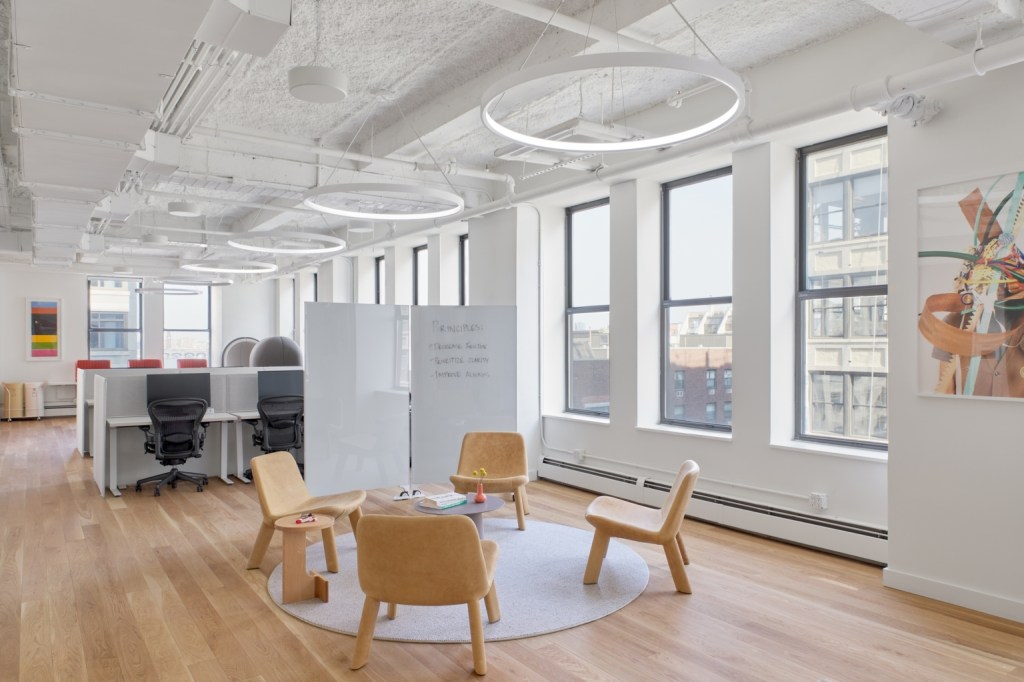‘Brown noise’ to enhance focus: Inside a neurodiverse-friendly office

Stepping into Understood’s Manhattan office is a sensory experience — just like any other office. Except it’s uniquely fitted for neurodiverse staff, offering a range of lighting and sound options, visible accessibility features and other intentional elements to make the space more comfortable for everyone.
“We started with the concept of when you walk in the door, it should feel different. You should have a lower cognitive load when you walk around,” said Nathan Friedman, co-president and chief marketing officer at Understood.
The return to offices has been especially challenging for certain workers, like those with ADHD, autism and dyslexia. Understood is a nonprofit dedicated to supporting people with learning and thinking differences in the U.S., and has corporate partnerships with employers of all sizes, and public partnerships with schools and local governments.
Employers across industries are paying greater attention to their neurodiverse workforce — with some reworking hiring process and training managers to work with neurodiverse staff, for example. It comes as a growing share of workers identify with being neurodiverse, and as more employers and HR leaders recognize the potential these staff can deliver when given needed support.
“There’s a clear business benefit for inclusion of neurodiversity,” Friedman said. “There’s revenue opportunities from people who are neurodiverse in solving more complex problems, solving them more efficiently and effectively, new market opportunities, and conducting research in different ways,” Friedman said.

“HR leaders are trying to understand how they can be better business partners to the CEO, and people engagement and talent is a critical component of that for almost any business,” he said.
Over the past few months, dozens of organizations like the nonprofit Human Rights Watch, a major tech company unnamed due to confidentiality, and others, have toured Understood’s office to see what they can take and implement in their own offices.

Reducing cognitive-load and context switching
Understood started building the new space just before the pandemic hit. The space was completely refitted and opened up to staff in late 2022. Many of the features in the office are designed to reduce cognitive load and context switching — both of which can be intensely draining for individuals with certain conditions like ADHD, autism and dyslexia.
Some examples include “brown noise” — a low-frequency sound that helps enhance focus and concentration that subtly plays from overhead speakers. Specially padded walls and ceilings in conference rooms, and noise blocking barriers between desks, also help eliminate unwanted sounds to create a less distracting atmosphere.
Each section of the office also has a different lighting style. Some areas are more warmly lit, while others are dimmer, and some are fluorescently lit. Workers aren’t assigned to a specific desk, giving them the option to move between spaces depending on which lighting option best promotes their productivity and comfort that day.

The space also includes a number of visible accessibility features designed to reduce cognitive load. Rather than naming conference rooms and wings nonsensical names, they’re named literally — as the West and East wings, and rooms are named numerically. All written materials are displayed in a dyslexia-friendly font Understood developed for its own branding, where the T’s, I’s and L’s have extended ligatures and specific marks to help differentiate.
Simple, inclusive accommodations
“What people love about the tours and information is that there are things people could do that don’t cost anything,” Friedman said. That might include sending pre-reads in advance of a meeting so people can fully digest information, or having clear captions on a screen so people can read what’s being said.
“Something like moving somebody’s desk is considered an accommodation, but with that literally there’s no cost, and if somebody is sitting by an elevator, that’s distracting,” Friedman said. Simple accommodations like that ultimately help reduce turnover, he said.
“This is not a flip of a light switch, you don’t have to do everything at once. Make commitments and make marginal and incremental improvements, and over time you’ll get up there, because not everyone’s going to be able to renovate a full floor,” he said.

“But what is realistic is taking the first steps that cost nothing, showing that improvement, and then demonstrating the value to leadership, that there is actually a cost benefit to what you’re doing, that it impacts the business, there’s stronger business performance, stronger people performance, and stronger investor performance. And that’s all leadership needs to really invest in it,” Friedman said.
Outside of Understood, other organizations have seen a growing desire to make offices more neurodiverse friendly post-pandemic. “We have seen an increased conversation around this idea of inclusivity,” said Lauren Gant, senior workplace advisory manager at Allsteel, a Chicago-based office furniture design company.
Allsteel sells a variety of products to make offices more neurodiverse-friendly, like acoustic panels to help manage noise levels, which it has seen increased demand for post pandemic, Gant said. Other offerings include “fidget furniture,” like chairs that rock back and forth, and privacy screens to lower stimulation in open office areas.
More employers today are looking at their spaces and considering: “How do we increase movement? How do we think about acoustics? How do we think about ergonomics for a broad spectrum of workers, and how do we support different types of work happening in the office?” Gant said.
“As people make that transition back to office, I think it’s easy to say, ‘you did it before, why can’t we do it the same way we’ve always done it?’ But there’s more recognition that because we’ve always done something one way, it doesn’t mean we can’t do better,” she said.


